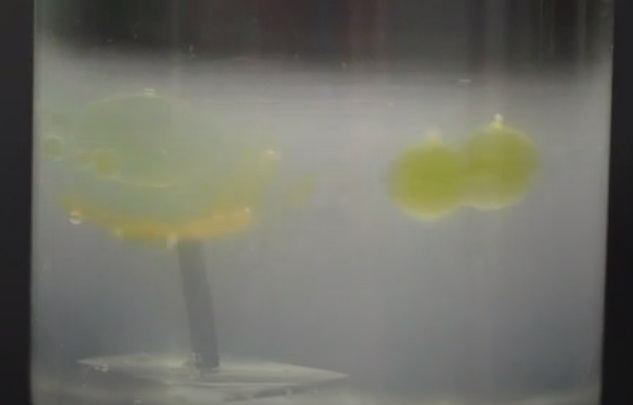Aug 13 2020
Soft Tiny Robots
 We are already living in the age of robots, but they are mostly hidden from our daily lives. Unless you have a job that entails interacting with a robot, the ones you see are mostly novelties, like Roombas, or the googly-eyed robots now wandering around some supermarkets. Robots, however, are an iconic fixture of “the future”, and have been for the better part of a century.
We are already living in the age of robots, but they are mostly hidden from our daily lives. Unless you have a job that entails interacting with a robot, the ones you see are mostly novelties, like Roombas, or the googly-eyed robots now wandering around some supermarkets. Robots, however, are an iconic fixture of “the future”, and have been for the better part of a century.
The robots envisioned by the retro-sci-fi of the 1950s have not materialized, outside movies, but in the background robotic tech has been advancing significantly. We all love to watch the videos of running and jumping robots by Boston Dynamics. The tech is getting amazing. But so far they remain mostly for industrial use – a robot in every home still seems like a phenomenon of the future, not the present. In this video the creators show off their robot who can, for example, deliver boxes. That’s impressive, but why would you use such expensive advanced tech (and risk having it jacked) to do something a human can easily and more cheaply do? Robots are great for manufacturing, and dangerous environments, but for everyday tasks they are not quite there – still too expensive to be worth it.
What about going in the opposite direction – small and squishy robots? We don’t even have to be talking about nanotechnology, not microscopic robots, just small ones. There are lots of tasks that could benefit from a swarm of small robots, but the challenge here is powering and controlling them. Advance is being made with this tech as well, but again we are not quite there, and still at the point where we cannot predict how long it will take before that “killer app” has arrived.
But we are making progress, as demonstrated by this recent study looking at wirelessly controlled aquatic soft polyp-like robots. They can be controlled by a combination of a magnetic field and also ultraviolet light. The magnetic field can be used to direct their motion, and the light can be used to change their configuration. This is a laboratory proof-of-concept, which means it is still likely years away from any application, maybe even decades. But the study demonstrates some of the basic concepts in how we could control swarms of small squishy robots in various tasks.
In this study the idea is that the artificial aquatic polyps, partly designed after coral, would attract target particles, then grab onto them, move them to a disposal area, and then let them go. This sequence of actions is obviously designed for cleanup. If they can get this to work on an industrial scale out of the lab, such robots could be designed to scrub an aquatic environment of contamination, small plastics, or perhaps even an oil spill. The authors report:
“Our soft robot assembly integrates a magnetically controlled stem with a light-responsive gripper with unmatched speed, insensitivity to contaminants, and high control of actuation underwater at low light intensities. The independent device segments can be orthogonally controlled to realize different tasks such as attracting, capturing, and releasing targets in an aqueous environment, demonstrating the significance of actuator assemblies in the fabrication of multifunctional soft devices operating underwater.”
Again, this is proof of concept. They are developing some basic capabilities with only a sense of what the specific applications could be. Also, going from the lab to a real-world application is not a trivial step. In fact, that is often the limiting step. But the proof of concept does need to come first. Also, these kinds of developments, even if they don’t pan out into a real application, may spin off other developments that do pan out.
Mostly I want to point out that we need to broaden our concept of what robots are and can do from the retro vision of Robbie the Robot – a humanoid clanking butler. Swarms of small robots may have a larger role in our future.
I also need to point out that there is a competing technology of small squishy robots – called bacteria. What if I said we had small robots, microscopic, that could carry out complex activities, coordinate their actions, were mobile, self-powered, and even self-replicating? Sounds pretty good. They also already have a programming language of their own – we just need to hack into it and reprogram them to do what we want. In fact, this is a proven technology, already in industrial use.
If we want to clean the oceans of plastic or oil-spills, we may have more success using billions of engineered bacteria rather than swarms of robots. We are also getting close to building our own bacteria from the ground up. This technology, synthetic life, is in its infancy but is as close to broad applications as tiny soft robots. I suspect both technologies will be complementary and find their niches where they work best. But if I had to guess, I would give the edge to synthetic and engineered life at the small scale, and robots at the larger scale.






